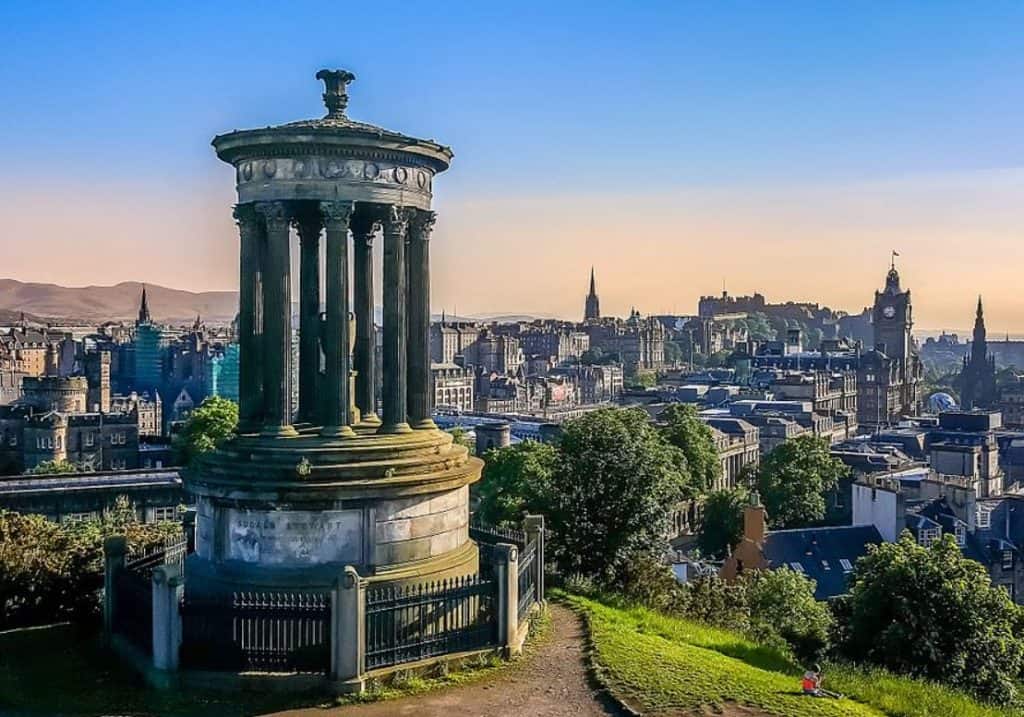The city of Edinburgh has been the capital of Scotland since the 15th century and is, therefore, the home of the most important government buildings in the country.
This also means that many of the most famous buildings in Edinburgh are related to government institutions of both the present and past.
There are, however, plenty of other remarkable structures in the city which make it the second-most visited tourist destination in the United Kingdom after London.
This is remarkable because it’s only the seventh most populous city in the United Kingdom and the second-most populous city in Scotland after Glasgow.
This means that there’s plenty to do here and in this list, we’ll take a closer look at some of the most famous buildings in Edinburgh, a city sometimes dubbed as the “Athens of the North!“
1. Edinburgh Castle
Edinburgh Castle is one of the most famous castles in Europe and the most prominent of all famous landmarks in Edinburgh because it’s located on a volcanic plug referred to as Castle Rock.
This rock has been the location of fortresses since the 2nd century A.D. which means that it has played a crucial role in both Edinburgh’s and Scotland’s history.
Most of the medieval structures that occupied Castle Rock were destroyed by heavy artillery bombardments during the Lang Siege in the 16th century.
Today, the castle holds the Honours of Scotland and some of the buildings are occupied by the Scottish National War Memorial and the National War Museum of Scotland.
It’s one of the most famous buildings in all of Scotland as well.
Official website: Edinburgh Castle

2. St Giles’ Cathedral
St Giles’ Cathedral is also referred to as the “High Kirk of Edinburgh” and is situated right in the heart of the city’s historical center.
The construction of this remarkable structure in the Old Town started in the 14th century, even though an earlier building was founded in the 12th century.
This fascinating church has been an important building in the city since the medieval period.
St Giles’ Cathedral has been used as the venue for numerous national events, as well as the services of the Order of the Thistle.
Official website: St Giles’ Cathedral
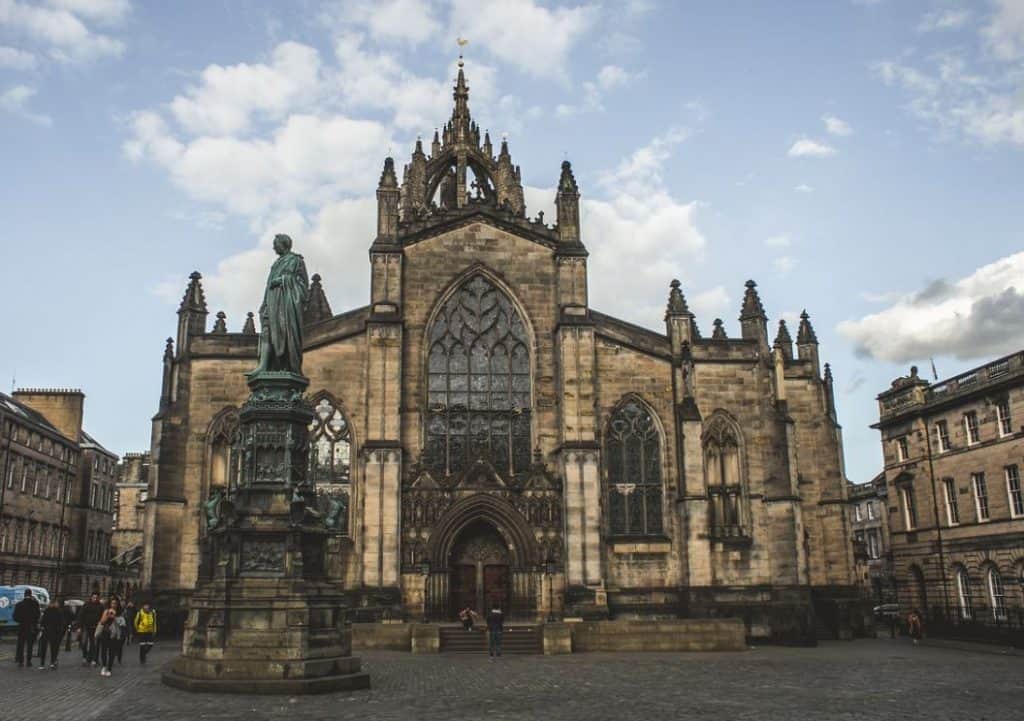
3. Scott Monument
The Scott Monument is a huge Gothic Tower built in honor of Scottish author Sir Walter Scott (1771-1832).
Only one monument in the world dedicated to a writer is taller than the 61.11 meters-high (200 feet) monument in Edinburgh, namely the José Martí monument in Havana, Cuba.
Planning of this remarkable structure started shortly after Scott’s death in 1832 and it was completed in the year 1844.
The monument is elaborately decorated with 68 statues, excluding those of the author and his dog.
It also features an observation deck that provides stunning views of the city, but the only way up the “Gothic Rocket” is by stairs, a healthy ascend, that’s for sure.
Official website: Scott Monument
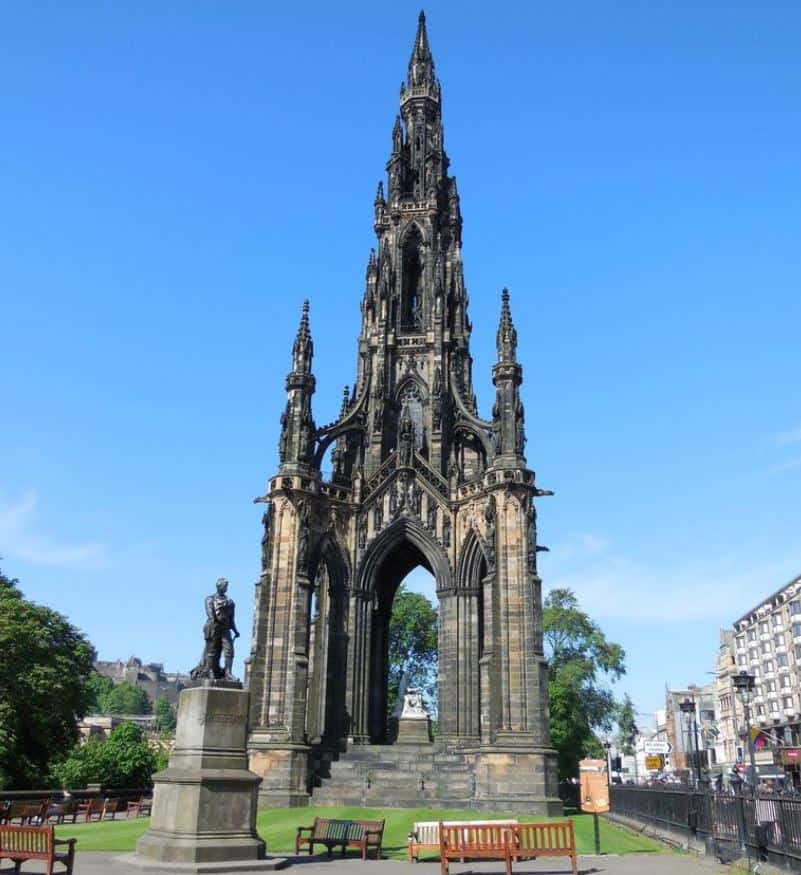
4. Palace of Holyroodhouse
The Palace of Holyroodhouse is mostly referred to as “Holyrood Palace” or simply “Holyroodhouse” is one of the most famous palaces in the world.
It’s the official residence of the monarch of the United Kingdom in Scotland and is connected with Edinburgh Castle through the so-called “Royal Mile.”
Even though it’s the Queen’s residence, she only spends one week a year here at the beginning of the summer for ceremonial purposes.
This is the only time of the year that the castle isn’t open to the public as well as it serves as a popular tourist attraction in Edinburgh.
Official website: Palace of Holyroodhouse
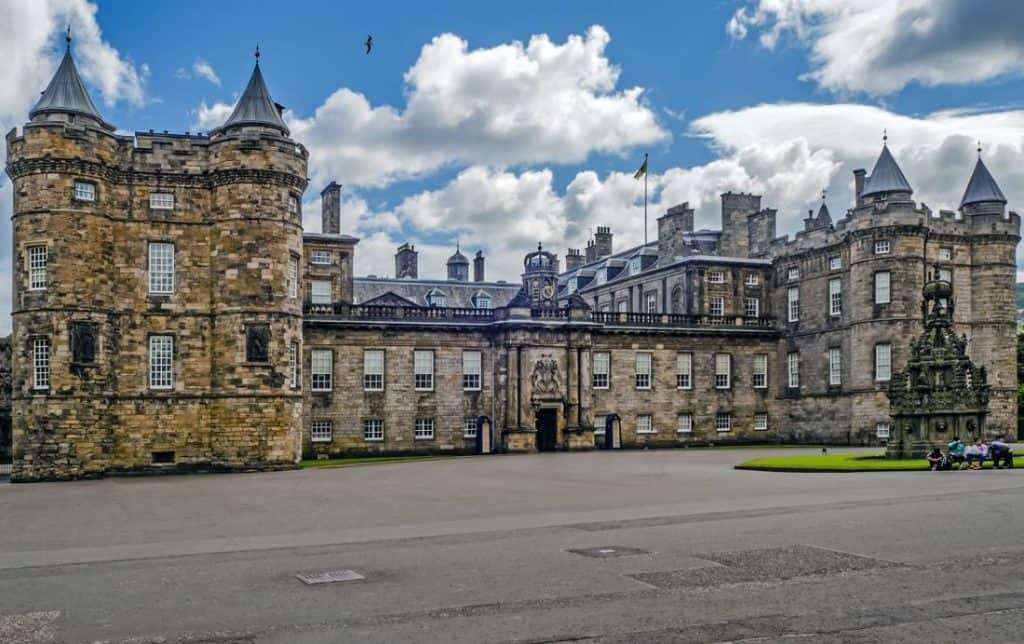
5. Scottish Parliament Building
As the name implies, the Scottish Parliament Building is the home of the Scottish Parliament.
It’s one of the newer buildings in the city as it was only completed in the year 2004.
The buildings of the complex feature a wide variety of remarkable architectural features designed by Spanish architect Enric Miralles (1955-2000).
All of the elements and buildings of the complex have been criticized by both politicians and the media. Regardless, the building has won multiple awards for its remarkable design and location.
Official website: Scottish Parliament
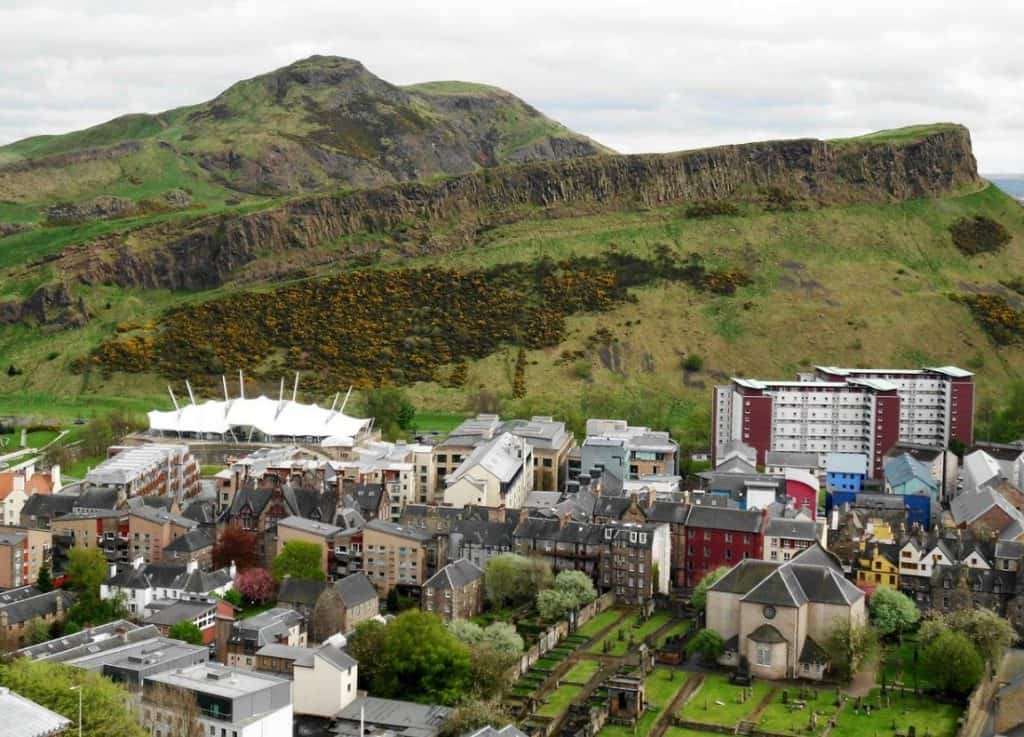
6. Scottish National Gallery
The Scottish National Gallery is the national art gallery of Scotland and is one of the multiple Neoclassical buildings in the city.
It was completed in the year 1859 and houses an immense collection of paintings dating back to the Renaissance and the art of the 20th century.
It’s one of multiple museums part of the National Galleries of Scotland, the other ones being the Scottish National Gallery of Modern Art and the Scottish National Portrait Gallery.
It’s one of the most popular tourist attractions in the city and welcomes well over 1.5 million visitors every year.
Official website: National Galleries of Scotland
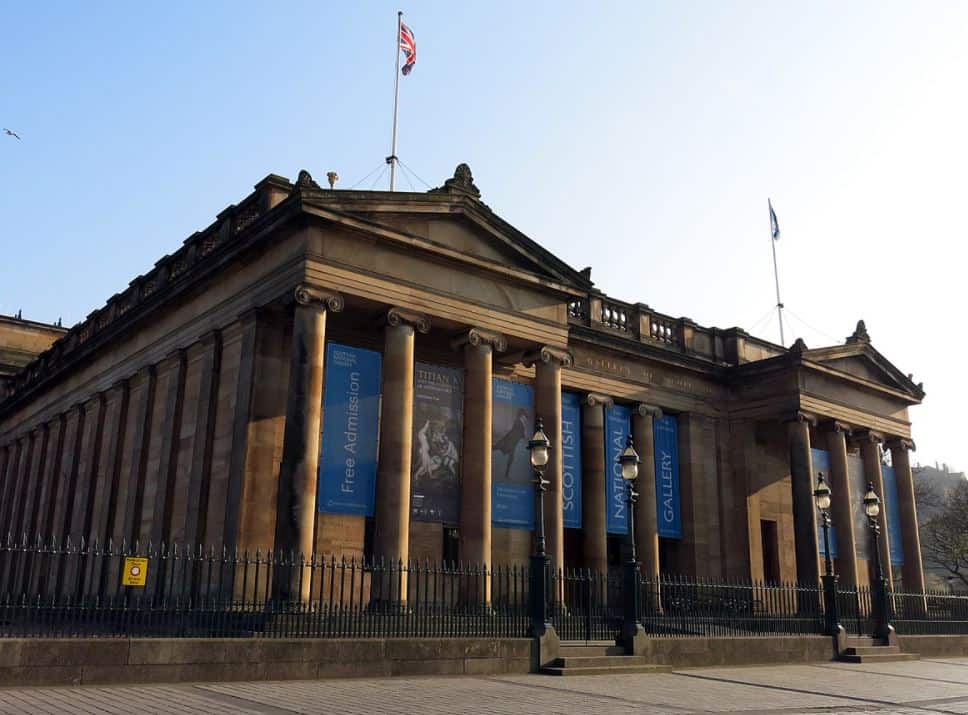
7. Balmoral Hotel
The Balmoral Hotel is one of the most fascinating landmarks in Edinburgh, located right in the heart of the city.
It was constructed in the early 20ty century and initially opened its doors as the North British Station Hotel in the year 1902 before being renamed the “North British Hotel” which was abbreviated to the “N.B.“
The hotel was completely renovated in the late 1980s and purchased by Balmoral International Hotels in 1990.
The name of the hotel is a Gaelic word that means “majestic dwelling,” and that pretty much describes this fascinating landmark building in the heart of the city.
Official website: Balmoral Hotel
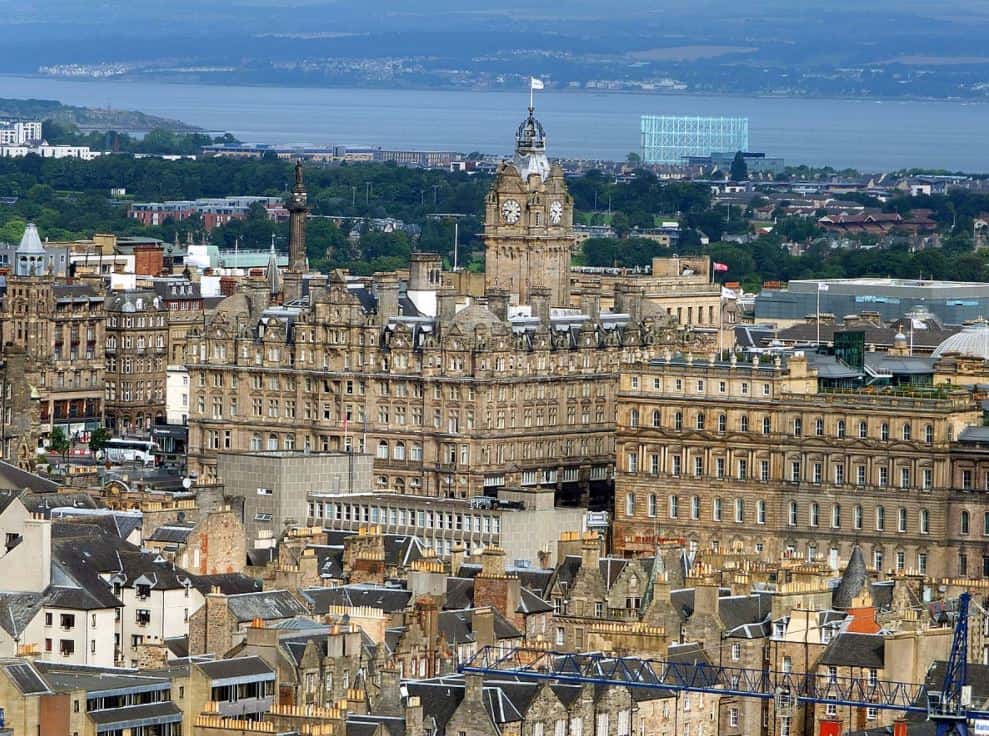
8. Nelson Monument
The Nelson Monument is a prominent landmark as it’s located on top of Calton Hill in the center of the city.
It was built as a commemorative monument for Vice-Admiral Horatio Nelson, 1st Viscount Nelson, (1758-1805) who won many naval battles for the British during the Napoleonic Wars in the early 19th century.
He eventually died during the Battle of Trafalgar off the coast of Spain.
This is also the reason one of the most famous squares in London, Trafalgar Square, was named as such.
This square also features a monument in his honor called Nelson’s Column. The Nelson Monument was built shortly after the battle between 1807 and 1816.
Official website: Nelson Monument
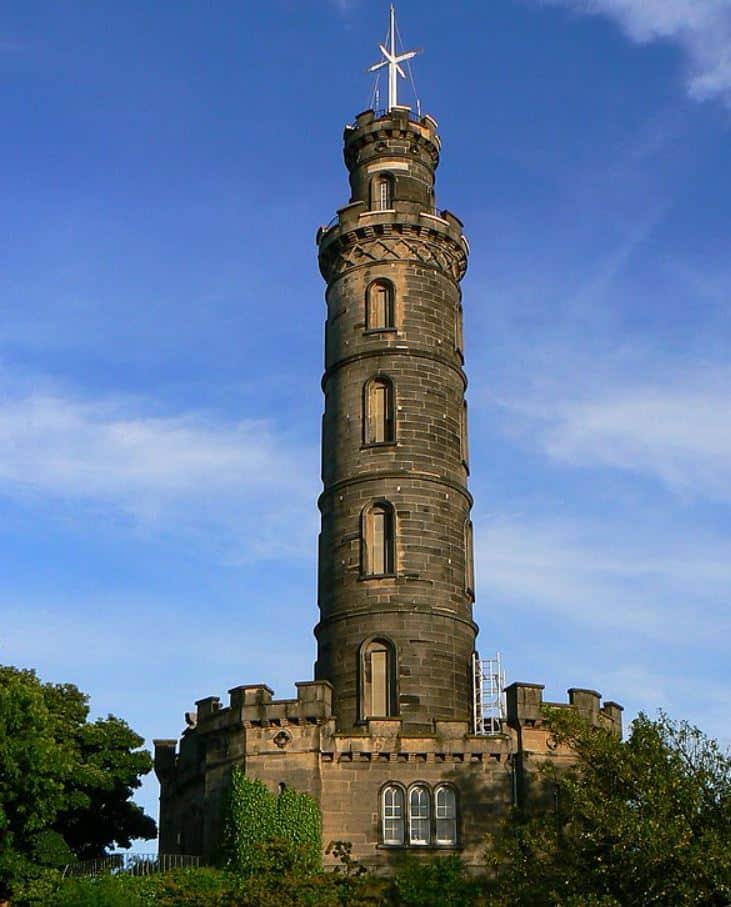
9. Bute House
The Bute House is the official residence of the Prime Minister of Scotland and is located at Charlotte Square, a large garden square in the center of Edinburgh.
The house was constructed between 1793 and 1805 as one of the main projects of the city’s New Town.
It’s the smallest of the Prime Minister’s 3 offices, the other ones being the offices at Holyrood and St. Andrew’s House.
It features 4 floors and has all the facilities to welcome and entertain official guests.
Official website: Bute House

10. National Monument of Scotland
The National Monument of Scotland is another monument located on top of Calton Hill in the center of the city.
It was designed in the 1820s based on the Parthenon in Athens and construction started in 1826.
Because of a lack of funds, it was left unfinished in the year 1829 and has been in its current state ever since, a peculiar sight to say the least.
Because of this remarkable turn of events, the monument was originally dubbed “A Memorial of the Past and Incentive to the Future Heroism of the Men of Scotland.”
It has also been mockingly referred to as “Scotland’s Folly”, “Edinburgh’s Disgrace”, “the Pride and Poverty of Scotland,” and “Edinburgh’s Folly.”
Official website: National Monument of Scotland

11. Usher Hall
Usher Hall is a large concert hall in the center of the city that was constructed in the year 1914.
The hall can hold about 2,200 visitors and is flanked by two other buildings, the Royal Lyceum Theatre on the right and the Traverse Theatre on the left.
The hall was named after the man who largely funded the project named Andrew Usher (1826-1898), a rich Whiskey distiller who donated £100,000 to the city to build the hall.
Unfortunately, the man died before construction even started so he never saw this remarkable Beaux-Arts-style building.
Official website: Usher Hall
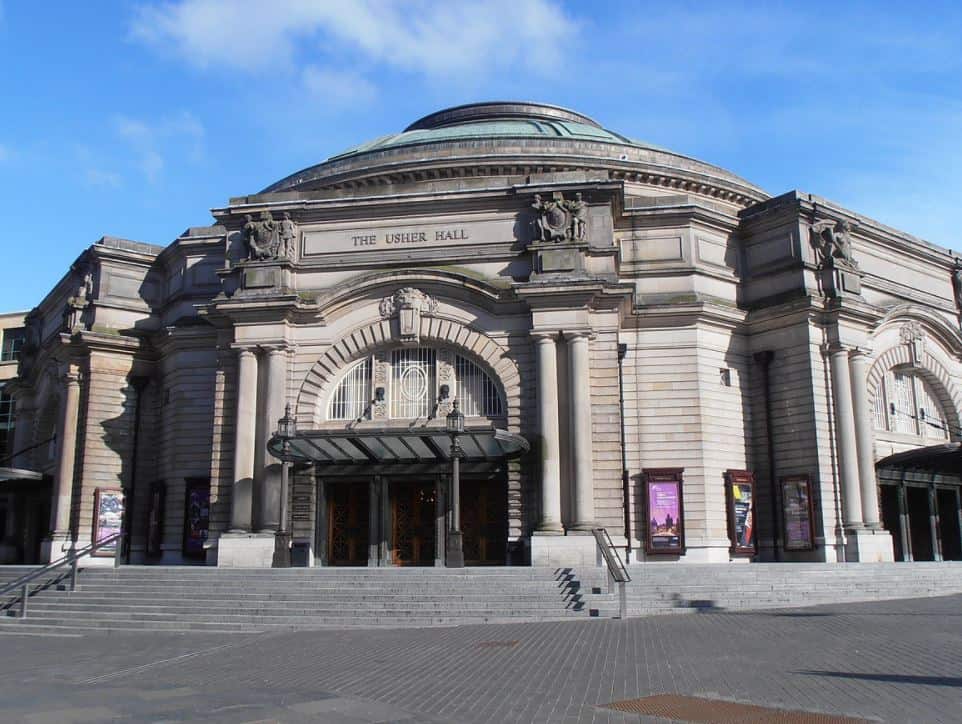
12. Greyfriars Kirk
Greyfriars Kirk is another parish church of the Church of Scotland that can be found in the Old Town of Edinburgh.
The church was named after Dutch immigrants referred to as Observantine Franciscans or “Grey Friars.”
They were given land in the mid-15th century but had to abandon it after the Scottish Reformation.
The land was turned into a cemetery shortly after and the current church was built on its ground between 1602 and 1620.
The original church contained both Gothic and Baroque architectural design elements but was destroyed by fire a couple of times. It was rebuilt both in 1718 and 1845.
Official website: Greyfriars Kirk

13. New College
The New College is part of the University of Edinburgh and is one of the most renowned places for studies in Theology and Religious Studies in the United Kingdom and has students of over 30 countries.
The building is located on the Mound in the heart of the Old Town of the city and was completed in the year 1846
Because of its elevated position and remarkable architecture, it’s one of the most intriguing buildings in Edinburgh!
Official website: New College

14. Forth Bridge
The Forth Bridge is one of the most amazing bridges in the world and is located about 14 kilometers (9 miles) to the west of the center of the city of Edinburgh.
It spans the Firth of Forth in the east of Scotland. It’s one of the ultimate symbols of Scotland and has been voted for as such in 2016.
It’s a railway bridge and is sometimes referred to as the “Forth Rail Bridge” so it can be distinguished from the “Forth Road Bridge” nearby.
Forth Bridge was completed in the year 1890 and has been designated as a UNESCO World Heritage Site in 2015
It’s considered to be one of the world’s “greatest cantilever trussed bridges,” reason enough to visit it during your stay in Edinburgh.
Official website: The Forth Bridges

15. Dugald Stewart Monument
The Dugald Stewart Monument is another monument situated on top of Calton Hill which overlooks the city.
It was built in honor of Scottish philosopher Dugald Stewart (1753–1828) and was completed in the year 1831.
It’s also another monument that was based on a structure in Greece, namely the “Choragic Monument of Lysicrates” in Athens.
This further strengthens the notion that Edinburgh is often referred to as the “Athens of North.”
Official website: Dugald Stewart Monument
